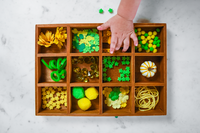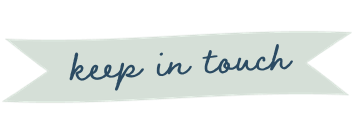By Michelle Mady
There are so many varieties of building toys. There are magnetic blocks, wooden blocks, plastic blocks, linking bricks, snapping sticks, and the list goes on and on. Many children love to use blocks to build (and knock down) towers and buildings. They create houses and cities. And although they can keep a child’s attention and imagination engaged for a period of time, it never feels quite like we get our money’s worth from blocks.
What if your child just isn’t that into building? Maybe you have a more reserved child who would rather look through a book; or maybe your child has so much energy that there is more knocking over than building; or possibly you have a princess-loving child who just wants to pretend to be locked in their tower or freezing a pond.
What if your child just isn’t that into building? Maybe you have a more reserved child who would rather look through a book; or maybe your child has so much energy that there is more knocking over than building.
Blocks can offer something to everyone. There are so many developmental reasons to use blocks in everyday play. There are cognitive, physical, social and even emotional benefits to using all types of blocks.
Blocks for Letter & Word Recognition
We all know and love the alphabet blocks that have been a baby staple for years. However, you can easily create your own block letters that are more meaningful to your child. Attach letters to any type of block to expose younger children to printed letters. For older toddlers and young preschoolers, just attach the letters in their name to blocks and have them “build” their name. You can even add sight words to the sides of blocks for older children to “build” a sentence or story.
Blocks for Storytelling & Scientific Inquiry
Bring a few animals and the blocks out. Let your child know that the zoo needs help renovating the animal habitats. Can they build a zoo and make sure that the lions are not too close to the zebras? Don’t forget that the monkeys need something to swing from! The birds need a covered habitat and the penguins need some rocks to climb. Encourage them to use different types of blocks or even some other materials around the house to make the perfect place for each animal. Allowing them to find the best way to build the zoo through trial and error is the best way to encourage later scientific inquiry.
Blocks for Focus & Concentration
Some children love to knock down towers and can sometimes knock down the creations of others. Instead of stopping this behavior, use blocks to encourage it with boundaries. Ask them to build a tower five blocks high. Help them carefully build a tower while counting each block. When you get to five, excitedly let them know it’s time to knock them down! Gradually add the number of blocks. As their focus increases on the task, the impulse to knock down other creations will diminish. Now, you can build towers side by side with your child, reminding them which tower they can demolish.
Blocks for Conversation Starters
Attach family pictures to some blocks. Ask your child to tell you about the pictures and what they remember of the person or activity. Make a picture out of blocks and ask your child what it looks like, having them guess like a game of Pictionary! Use these props to start conversation, and practice talking with your child to increase their comfort in later social situations.
Blocks are a staple in every childhood. Every early childhood classroom typically has an area fully devoted to building, construction, and blocks. They are such versatile toys with so many applications. Building toys of any kind can easily meet so many developmental needs of young children.
-
About the author: Michelle is a mom of 5 children ranging in age from 5 to 15. As a toddler and preschool teacher, she shares experiences, activities and guidance to other parents, as both a parent and as a professional early childhood educator, at any stage of their parenting journey.
Photo credit: iStock.com/fizkes




